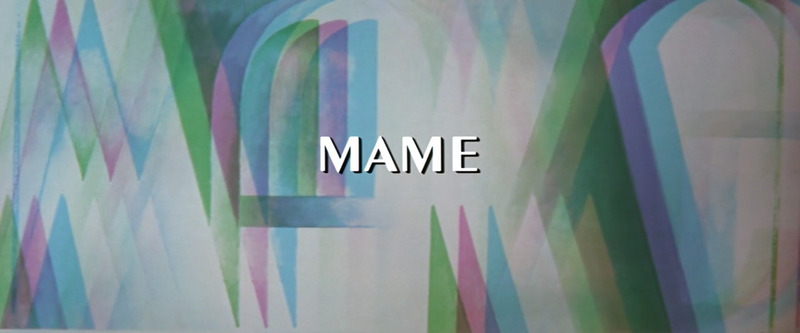
One of my favourite reads of 2020 was Auntie Mame by Patrick Dennis, which follows the misadventures of a fabulous, hard-partying aunt who sends her nephew to naked schools and gets into all kinds of scrapes. I loved the novel instantly, but I dreaded watching the 1958 film adaptation because the book is quite risqué for the 1950s (underage sex, swearing, interracial relationships, you name it) and I thought the film would have to strip all that out. To be fair it did, but it’s such a good movie I couldn’t hold that against it. But I knew that lurking in the background was the ill-starred 1974 adaptation starring Lucille Ball. This movie is nearly universally reviled, not least by the people who were in it (Bea Arthur called it a “terrible embarrassment”). So how much of a dent do you reckon we can put in this two-hour-and-twelve-minute epic musical?
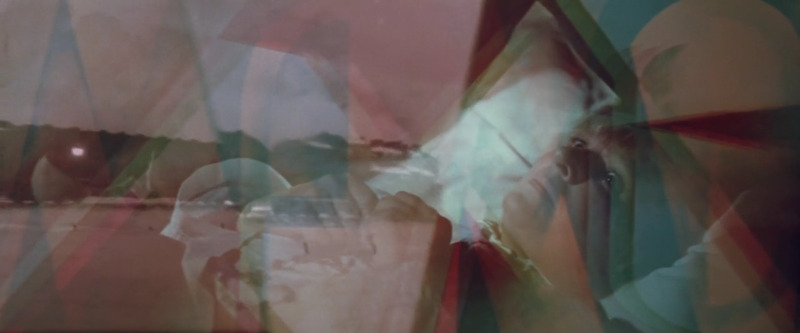
We’re not even past the opening credits and already we’re in trouble. Agnes Gooch, the maid, sings a musical prayer to a patron saint while the screen shows three different images overlaid on each other, one of which is a gaudy colourful backdrop. Hoo boy, strap yourselves in, kids.
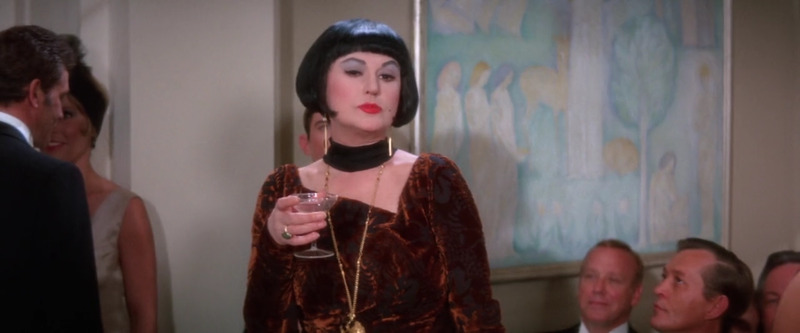
The first scene of the story is the roaring cocktail party where Mame’s nephew Patrick meets her for the first time. The book tells us right off the bat that there’s men dressed as women and women dressed as men bitching about their friends. I love it! So how’s this going to translate? We have Bea Arthur playing Mame’s best friend Vera, and she looks fabulous in the part. I won’t lie, at first I thought she was the man dressed as a woman because she has such a low voice. So where are our cross-dressers? They’re in the 1958 version — but not in the 1974 version? Sexual revolution my arse!
Both the novel and the 1958 film introduce us to Mame as a Chinese woman. Patrick doesn’t know his aunt and confuses her for someone else because she’s done up in some exotic costume for her party, which would have been a bit naughty and disreputable in the 20s when this scene takes place. I was so curious how they’d pull this off without being offensive, but Rosalind Russell in the 1958 film nails this! She’s done up in Chinese-style clothes that mercifully don’t come anywhere near to offensive. But what about Lucille Ball?
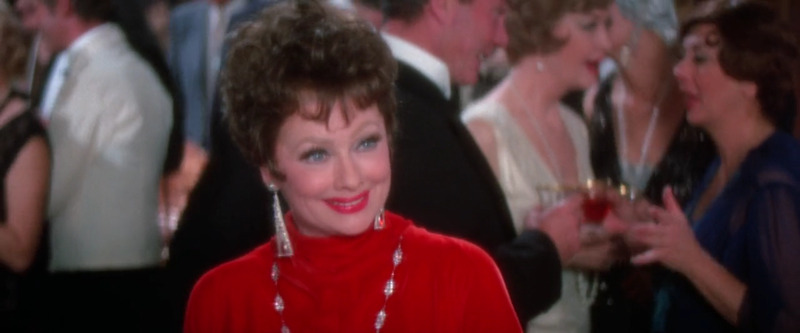
What the actual fuck? Did my contacts just fall out? I can’t fucking see her. And she’s certainly not wearing anything particularly edgy. This film was pilloried at the time for shooting Ball’s close-ups in extreme soft focus and I have to agree, it’s jarring as hell. Constantly trying to refocus my eyes started giving me a headache. It doesn’t help that all this happens during an interminable musical number that might be the first song I ever heard that doesn’t have a tune. Which brings me to another point — Lucille Ball can’t sing. She used to, I’m positive, but I guess her voice had just gone by the time she did this movie because she’s so off-note it’s like listening to Florence Foster Jenkins.
One scene that actually comes off well is Vera’s theatrical production, where she dresses up as a lady astronomer and sings, “The man in the moon is a lady. The cow that jumped over cried jumpin’ Jehova!” It’s the best song yet, frankly, and it’s the joke song. Not an auspicious sign. When Mame brings down the whole production Vera gets this line:
Aha, now we’re getting somewhere! I was struggling to figure out why this film falls so flat, but just now we got a very funny line and a great delivery from Bea Arthur — so what is wrong with it? Part of the problem is that the music is boring and maudlin. Part of the problem is the flat, static direction. But you can’t avoid laying a lot of the blame at Lucille Ball’s feet. I can’t think why a veteran comedian like her should fall so flat at this. On paper she’d be great for the role, but it’s like she’s not even trying. I don’t mind, as some people have pointed out, that she’s a little too old for the part. I just don’t see Mame’s glamour — or, sadly, her humour. Aaaand then we launch into yet another flavourless song. Kill me now. I have to confess I only fast-forwarded through the rest of the movie because I was only forty minutes in and the prospect of another hour and a half was too much to bear.
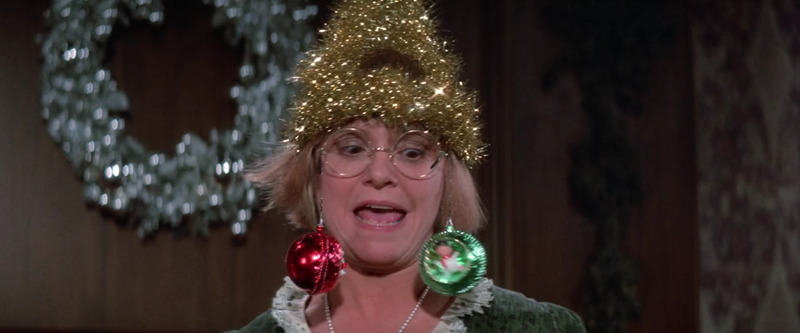
When you haven’t bought a Christmas tree yet and you don’t feel like paying for one. Stick a bauble on me and scatter some presents around my feet, no-one’ll know the difference.
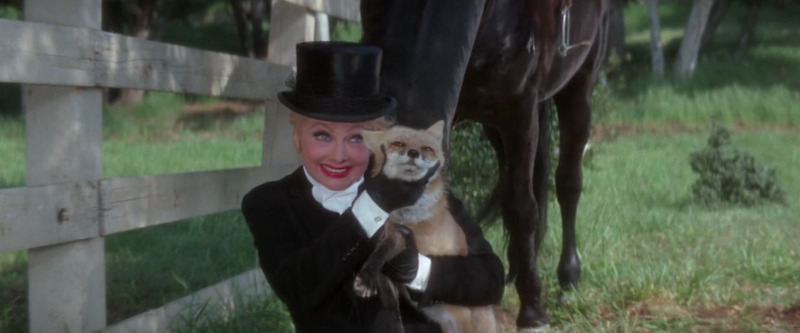
Who was it who saw Gloria Swanson in a film with a lion and remarked, “I can’t tell which one of them is stuffed”?
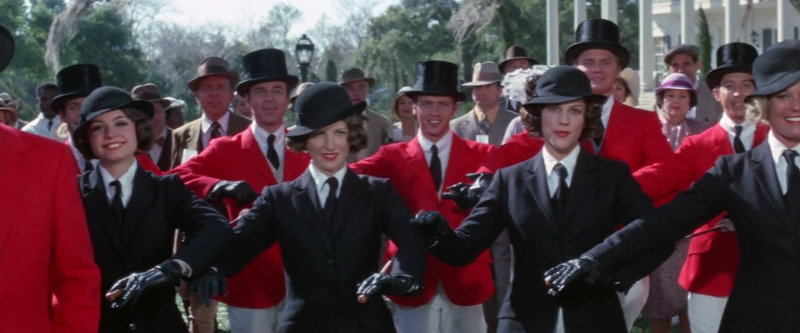
Christ, not more music. I can’t with this.
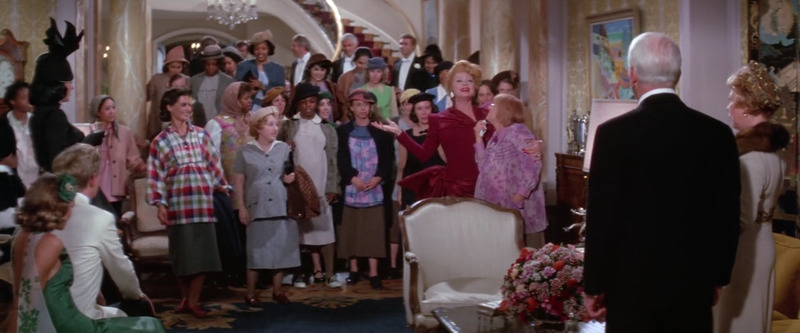
In the last scene of the film, Mame gets up the noses of some racist snobs by buying the property next to theirs and building a home for single mothers. While I like the sentiment, I feel like this takes some of the wind out of the scene’s sails — both the novel and the 1958 version have Mame installing Jewish people next door to aggravate the racists. Why they decided to swap out racism with generic class snobbery is beyond me because they missed the chance to make one of the story’s great statements. They do look like a fairly diverse bunch and the snobs are characterised as racists, but then why change the end? It feels like a timid choice. Oh well. This film has been anything but courageous, so I shouldn’t have expected them to stand for anything at the end.
The Skinny
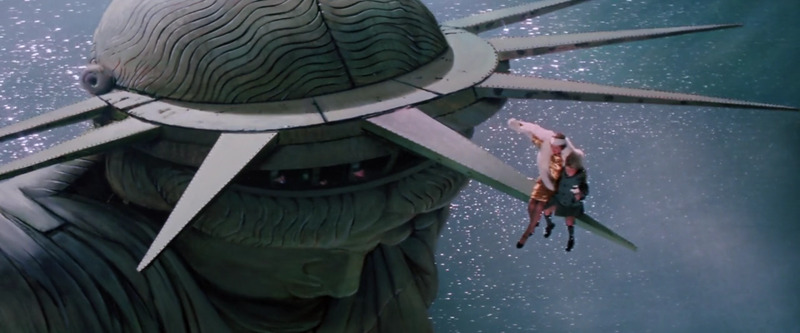
“Life’s a banquet, and most poor sons of bitches are starving to death.”
This movie is exhausting. Poor direction, poor casting, poor acting, poor songwriting, and a timid production conspire to make this damn near unwatchable. Bea Arthur is as great as ever, but even she can’t do much to float this cinematic Titanic. Do yourself a favour and watch the 1958 version with Rosalind Russell. You won’t regret it.